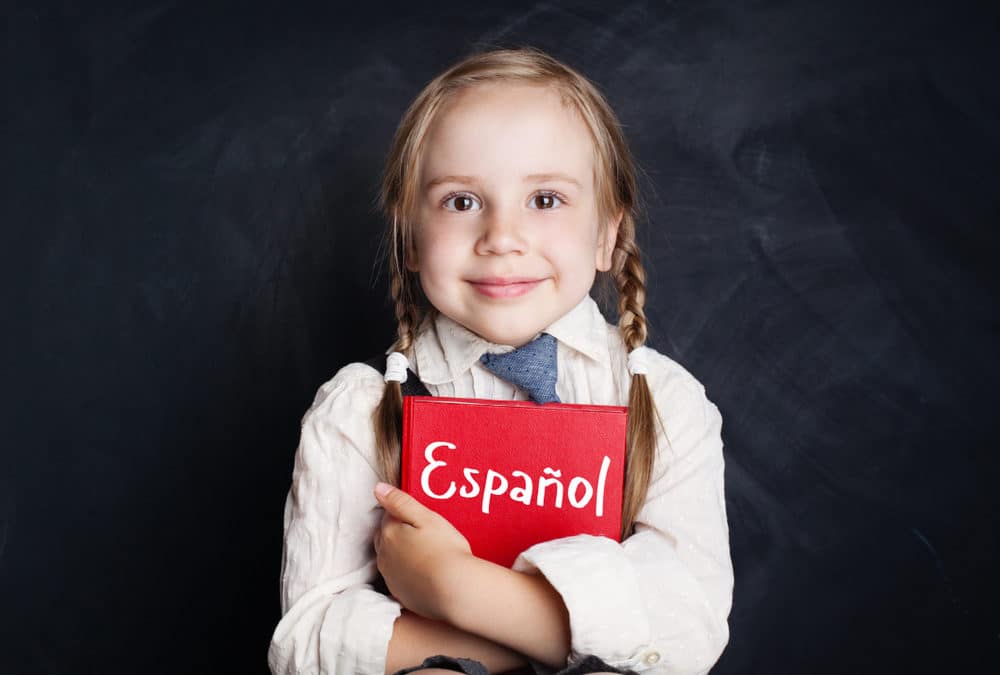An estimated 23% of the United States population is bilingual with a majority of the group speaking both Spanish and English. That’s more than 60 million people, an amount that is larger than the number of people living in Colombia!
Especially if you’re raising a family in an urban setting, you’ll notice all sorts of languages and cultures intermingling to create the perfect linguistic playground. Let’s face it, New York City is the bilinguist’s dream. But what if you’re not located in a major international hub? What if you live in Rural America and barely see crowds, let alone Spanish-speaking neighbors?
In that case, raising a bilingual kid may seem a little daunting. While there are an abundance of reasons to teach your kid Spanish, including improved academic success and emotional functioning, it can be hard to locate the right resources and strategies. You may find yourself wondering, is this even possible? The short answer: a resounding YES.
Eager to count your kid among those 60 million bilingual North Americans and open up a whole new world of opportunity along the way? Read along!
Geography & Language Learning
Location can certainly be an asset when it comes to picking up another language, but it should never be viewed as a hindrance. Though it’s true that speech and dialect are intrinsically tied to place and culture, language is becoming more geographically accessible due to globalization. Now more than ever, Spanish plays a huge role in promoting connectivity worldwide no matter if you’re on the west coast or in the plains.
Multilingualism in the US
According to Martha G. Abbott, executive director of the American Council on the Teachings of Foreign Languages, “The timing could not be more critical for the United States to embrace linguistic and cultural development for all its citizens.” In addition to monolingualism being a major economic deterrent, Abbott says there are substantial shortages in language instruction for our youth.
To promote bilingualism in your community and household, look into programs like the nationwide Seal of Biliteracy. If you’re feeling extra ambitious, you could even tackle a new language as a family!
Multilingualism is not only the future, it’s also the present. Spanish is the optimum second language for North Americans, and its promised success is evident in expanding economies and communities worldwide.
Want your child to become bilingual by learning Spanish?
Sign up for our newsletter & get a FREE Spanish class!
Pathway to Bilingualism in a Monolingual Setting
We’ve talked the talk, now it’s time to walk the walk. As with any goal, it’s always helpful to have a roadmap. Here at TruFluency Kids Online Spanish Immersion, we’ve laid out a three-step pathway to help your kid reach bilingualism no matter the setting.
1. Find Community
Especially when children are young and even throughout adulthood, feeling a part of something bigger is vital to personal wellbeing. At the onset of your kid’s language journey, he or she may feel a sense of discomfort if it seems like there aren’t other kids who are also speaking Spanish.
To foster a sense of belonging, the Internet may just become your best friend. Try searching for language learning communities online or check out virtual weekly meetings like the ones hosted by Spanglish Exchange.
Also, consider this fact: direct immersion is one of the best methods for promoting bilingual education. If the resources are there, send your kid on an exchange trip to a Spanish-speaking country like Mexico, Peru or Spain. Not only will they have the time of their life, but they will more easily find community and connection. For best results, try a camp for local kids, so that your child will be around others who speak the language.
2. Make it a Routine
As with any practice, consistency leads to improvement. While it’s true that monthly lessons are better than nothing, weekly (or even daily!) lessons will result in a much more rapid and natural rate of learning for your young Spanish speaker. To promote routine, use technology to your advantage. Most children already love watching Netflix, so why not sneak a little education in there along the way? Luckily, our TruFluency Kids team has put together an informative guide on how to use Netflix during language learning. It’s time to put those subtitles or voice-over audios to work!
One of the best ways to ensure that Spanish is spoken every day in and out of the household is by bringing in a Spanish-speaking au pair or nanny. This is an especially attractive option if parents don’t speak the target language. With an au pair from Ecuador, for example, your child will have direct Spanish exposure at the dinner table, the playground, and beyond. The best part is this will become such an ingrained part of his or her routine that it won’t even feel like a chore!
3. Try out TruFluency Kids Online Spanish Immersion
If you want your kid to join the rapidly growing number of bilingual North Americans and bust the myth that learning Spanish will make your kid forget English, consider trying a free class with TruFluency Kids Online Spanish. You can use promo TFKNEWS and apply this to your first class or full course. Community and consistency are essential, but they’re only part of the equation. On the pathway to becoming bilingual in a monolingual setting, the ability to learn Spanish directly from a native speaker is central to success.
Read our step-by-step instructions and start your child’s pathway to Spanish fluency today!


